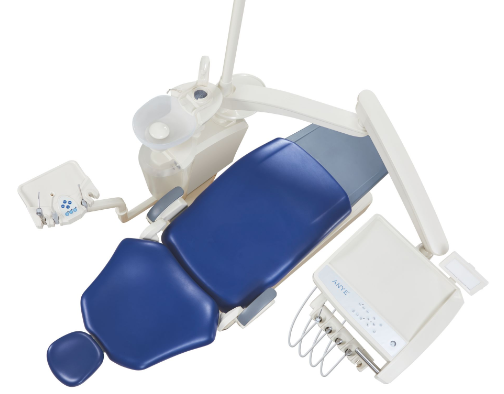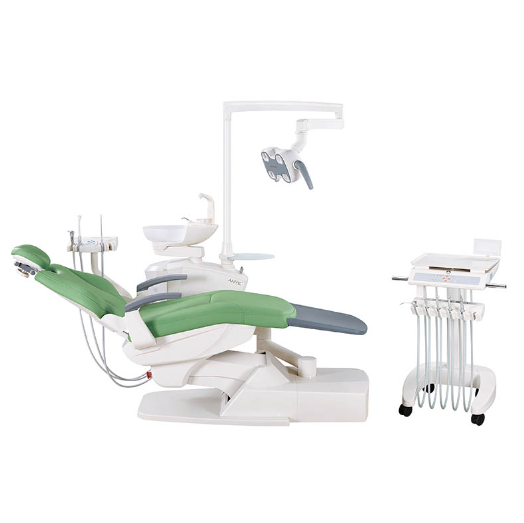8 Key Factors to Select Dental Chair Delivery System
Dental chairs are the nucleus of any dental practice, and the delivery system integrated into these chairs significantly influences the practitioner's workflow and patient experience. Then, in this post, the author guides you how to choose the right dental chair delivery system for your clinics.
What are the Types of the Dental Chair Delivery System?
Dental chair delivery systems play a crucial role in the efficiency, ergonomics, and functionality of a dental practice. The dental chair delivery systems can be divided into three types.
Traditional Side Delivery Systems
These systems are commonly found in dental practices, with instruments and tools positioned to the side of the patient. While they offer a sense of familiarity and are relatively easier to adapt to for practitioners accustomed to this setup, they do have limitations. Accessibility can be an issue, especially when maneuvering around the patient's head, which might affect the practitioner's comfort and workflow.
Over-the-Patient Delivery Systems
These systems represent a leap forward in terms of ergonomics and accessibility. Placing instruments over the patient's chest allows for greater freedom of movement for the practitioner.
This setup minimizes the need to reach across the patient and optimizes the working zone, enhancing both comfort and efficiency. It often leads to a more relaxed patient experience as the practitioner can work more freely without obstructing the patient's view.
This setup minimizes the need to reach across the patient and optimizes the working zone, enhancing both comfort and efficiency. It often leads to a more relaxed patient experience as the practitioner can work more freely without obstructing the patient's view.
Rear-Delivery Systems
Rear-delivery systems are designed to optimize space and provide improved access for both the dentist and the assistant. However, their unique setup might require some adaptation from the traditional methods. These systems position the tools and instruments behind the patient's head, offering an unobstructed view for the practitioner and enhancing the assistant's ability to work seamlessly.
Although they might necessitate a learning curve, they can significantly improve workflow and ergonomics once practitioners become accustomed to their setup.
Although they might necessitate a learning curve, they can significantly improve workflow and ergonomics once practitioners become accustomed to their setup.
Factors to Consider When Choosing a Dental Chair Delivery System
However, many people have no idea about how to get the right dental chair delivery system for dental treatment. In this section, the author will list several factors that you need to consider during the selection process.
Functionality and Versatility
Assess the system's capabilities to ensure it aligns with your practice's needs. A versatile system that accommodates various dental procedures and techniques allows for seamless transitions between different treatments, optimizing the workflow and productivity.
Technology Integration
Integration with modern dental technologies such as intraoral cameras, digital imaging systems, or CAD/CAM systems can significantly enhance diagnostic capabilities and treatment precision. A system that supports such integrations can streamline procedures and improve the quality of care provided.
Maintenance and Durability
Evaluate the ease of maintenance and the system's durability. A reliable and durable system minimizes downtime due to maintenance issues, ensuring continuous operation and reducing long-term costs.
Infection Control and Hygiene
Hygiene standards are paramount in dental practices. Choose a delivery system that allows for easy cleaning and disinfection to maintain a sterile environment, reducing the risk of cross-contamination between patients.
Customization and Adaptability
Consider a system that offers customization options to fit specific preferences or adapt to future changes in your practice. Adjustable features or modular designs allow for flexibility as your practice evolves.
Cost and Return on Investment
While initial costs are essential, evaluating the long-term return on investment is crucial. Consider factors such as lifespan, maintenance costs, and potential productivity gains to make a comprehensive cost-benefit analysis.
Manufacturer Support and Warranty
Research the manufacturer's reputation for customer support, warranty coverage, and availability of spare parts. A reliable support system ensures prompt assistance in case of issues and contributes to the system's longevity.
Space and Clinic Layout
Assess the available space in your clinic and how the delivery system fits within the overall layout. Opt for a system that optimizes space utilization and integrates seamlessly with the clinic's design without causing disruptions.
Conclusion
Each system has its advantages and challenges. The choice of a delivery system often depends on the practitioner's preference, the type of procedures performed, office space considerations, and the overall workflow optimization desired by the dental team. Some practices might even combine elements from different systems to create a customized setup that best suits their needs, balancing familiarity with enhanced ergonomics and accessibility.



Leave a comment